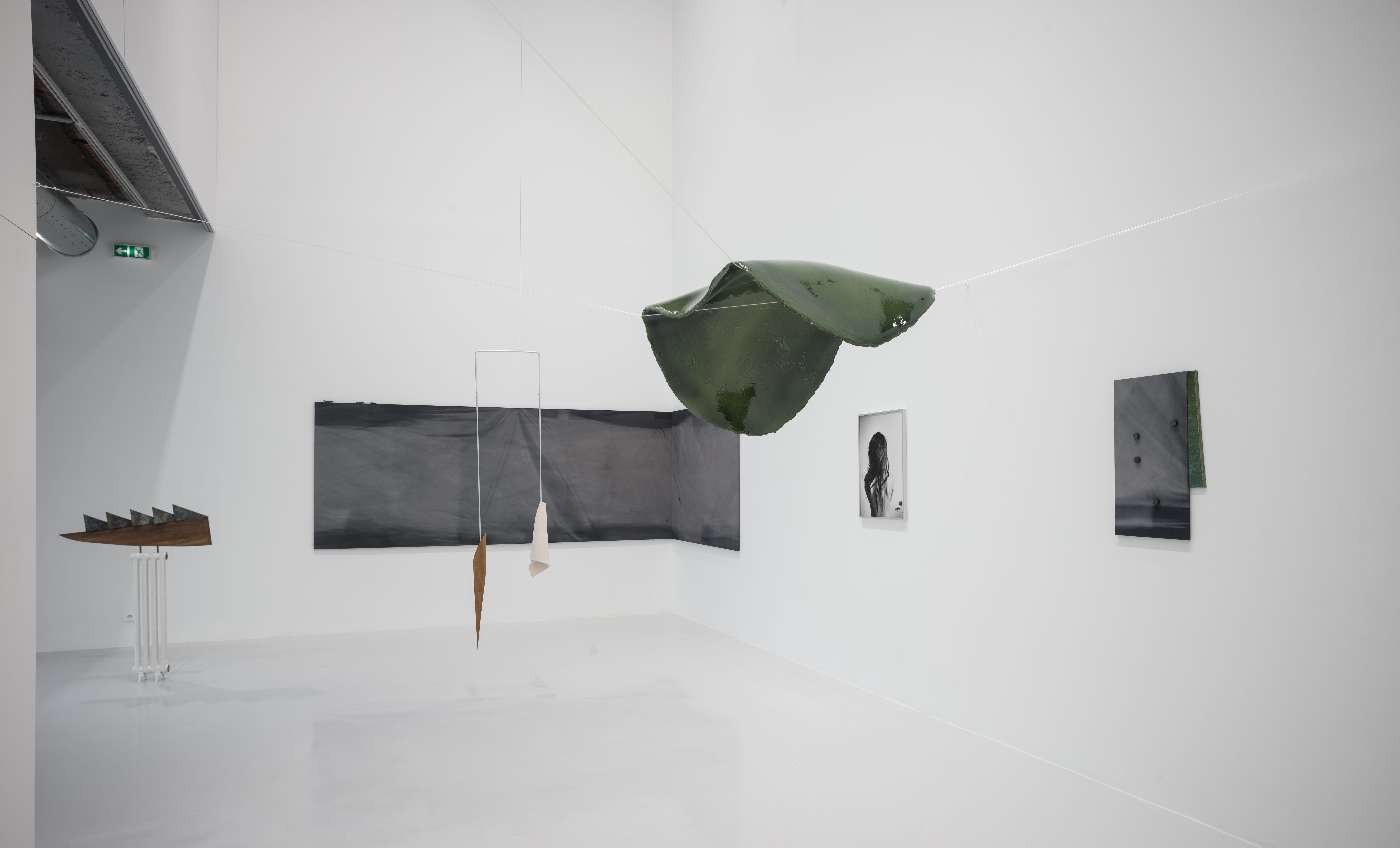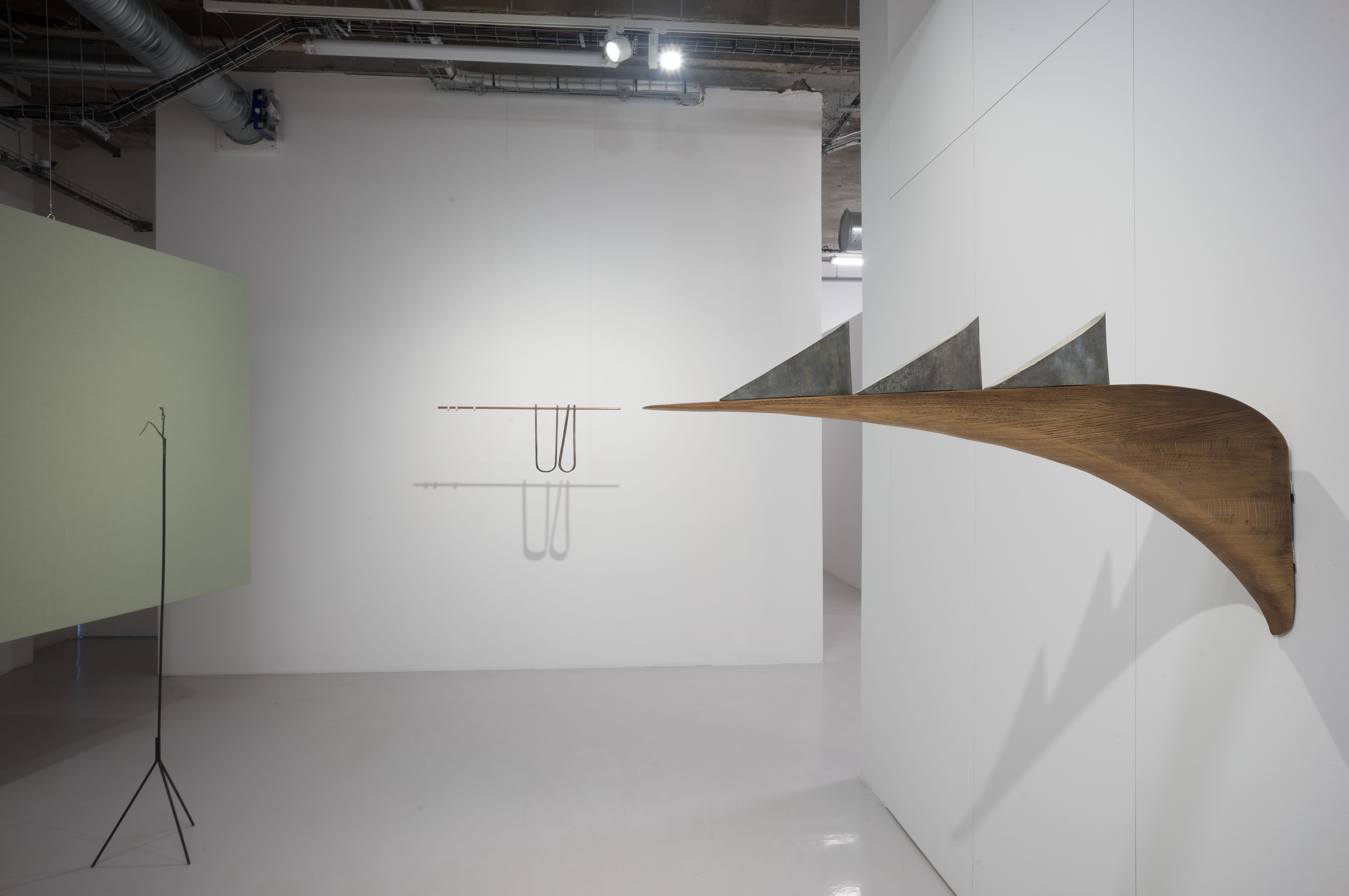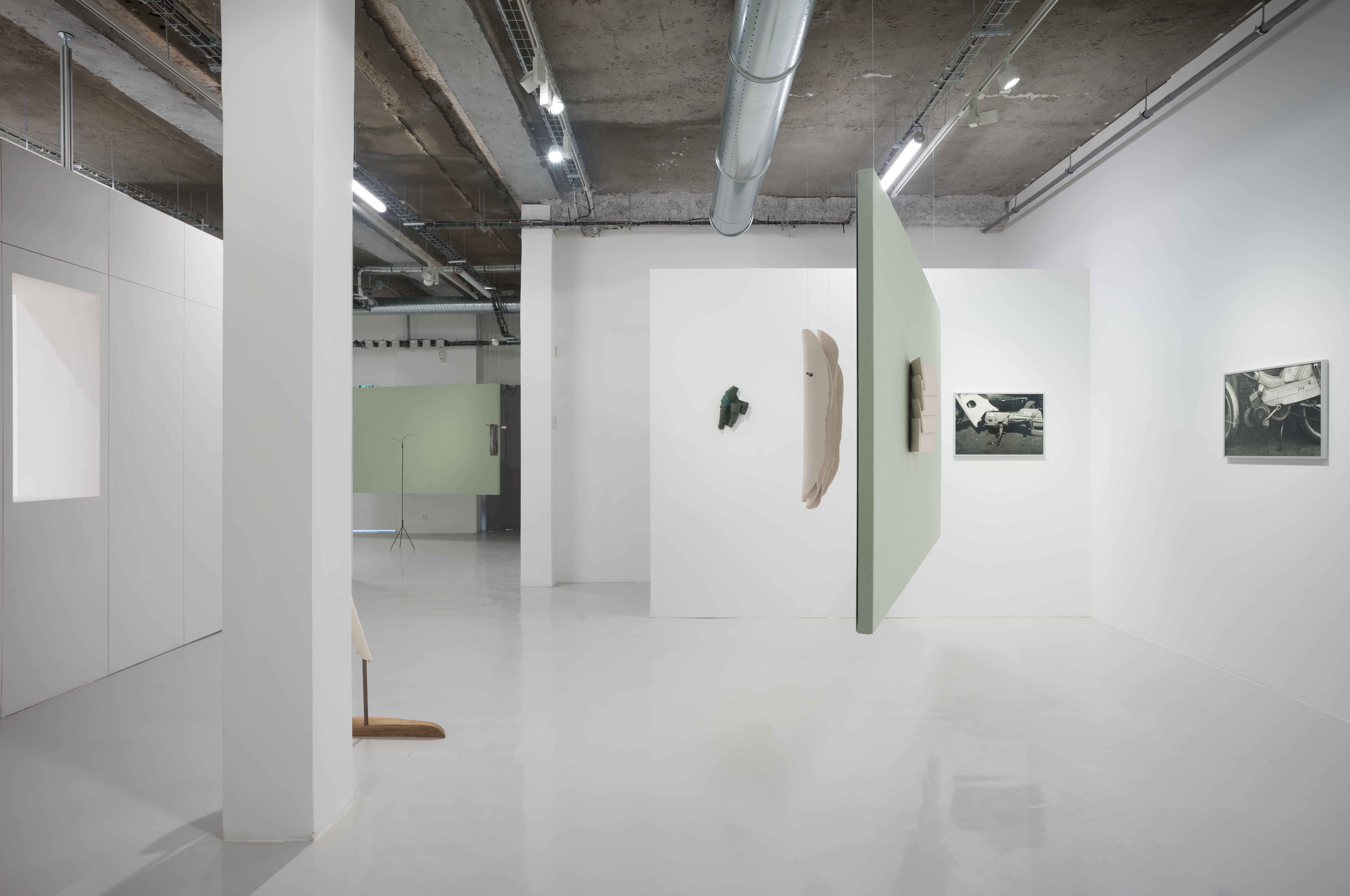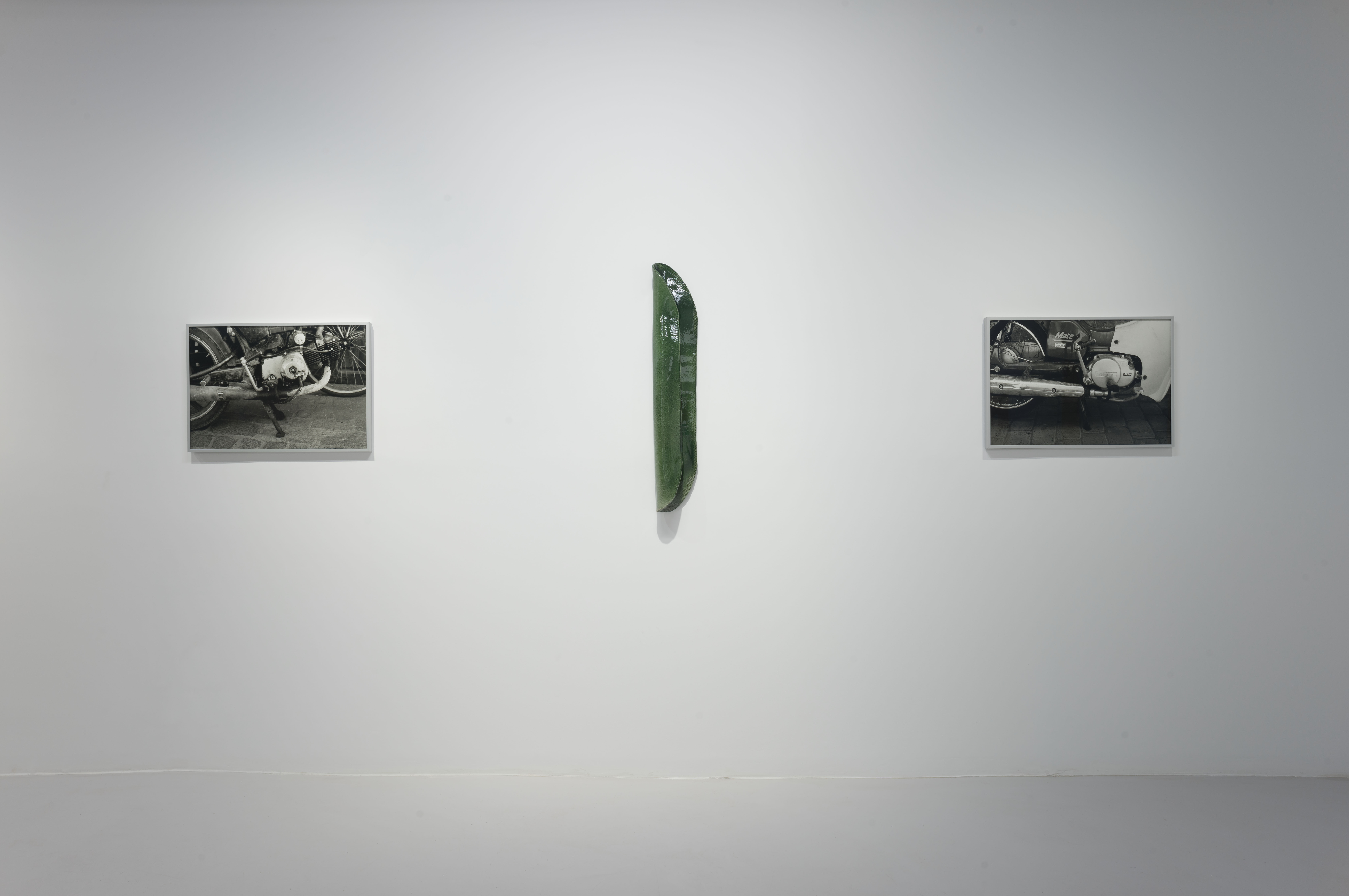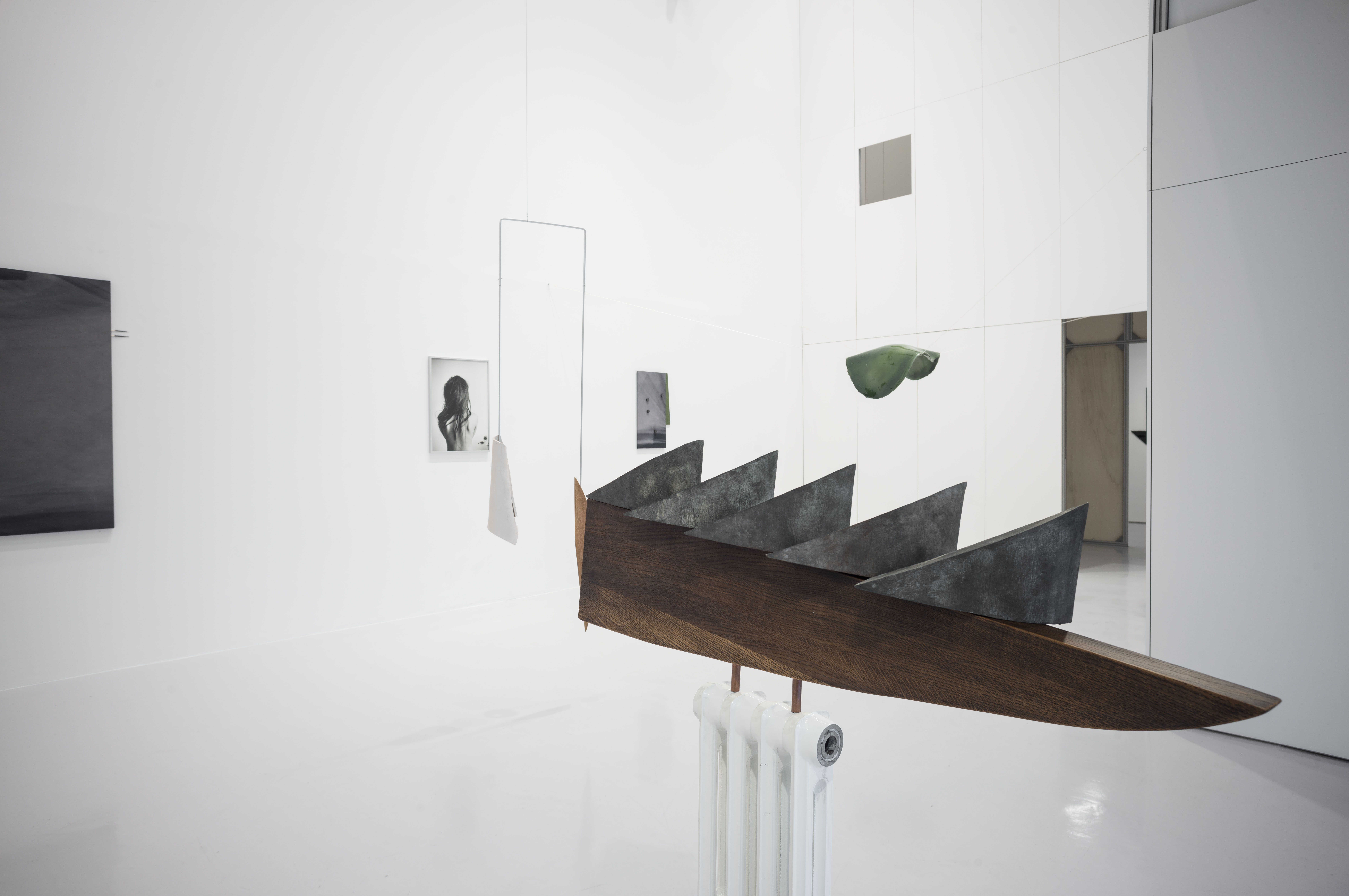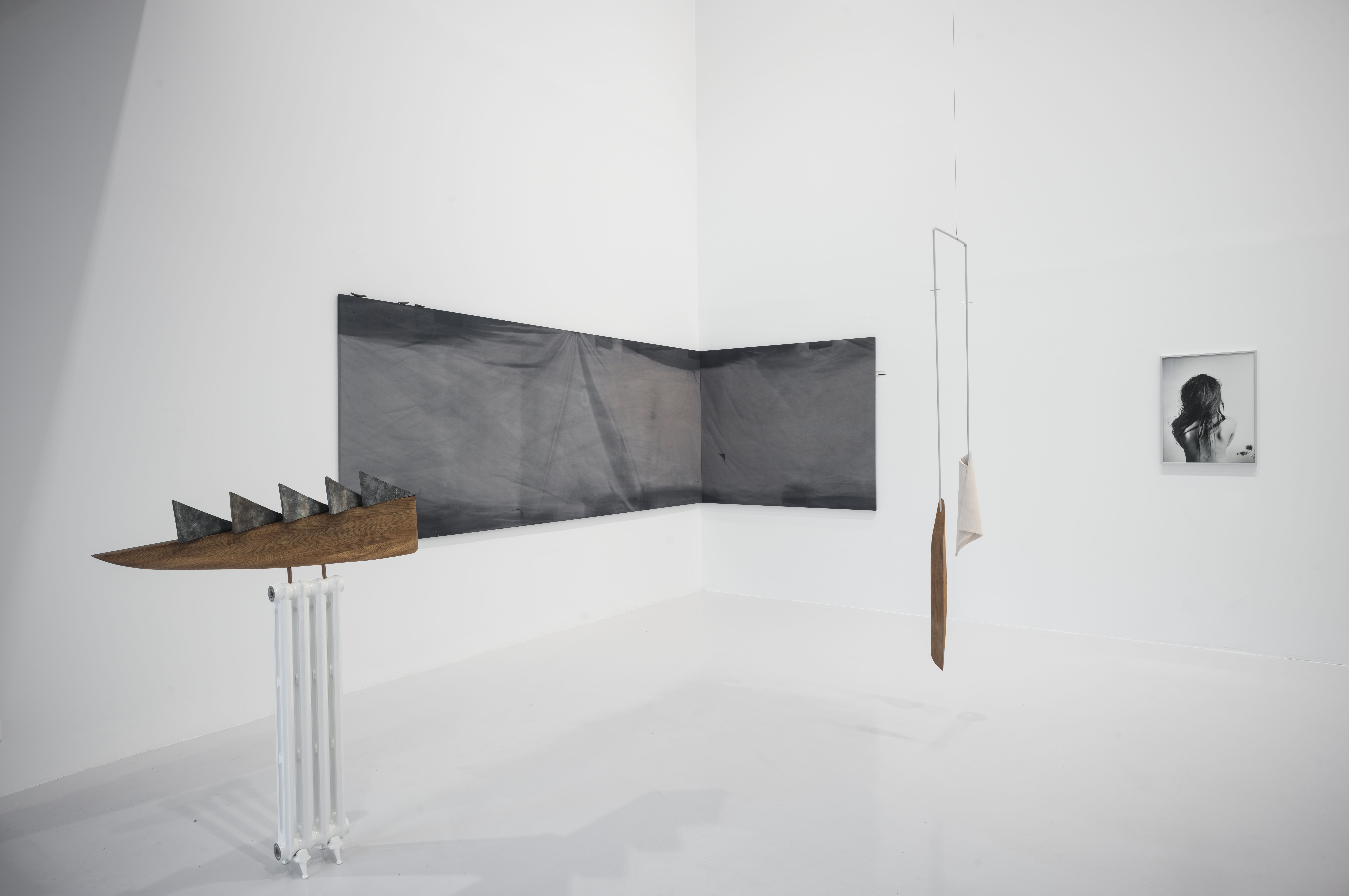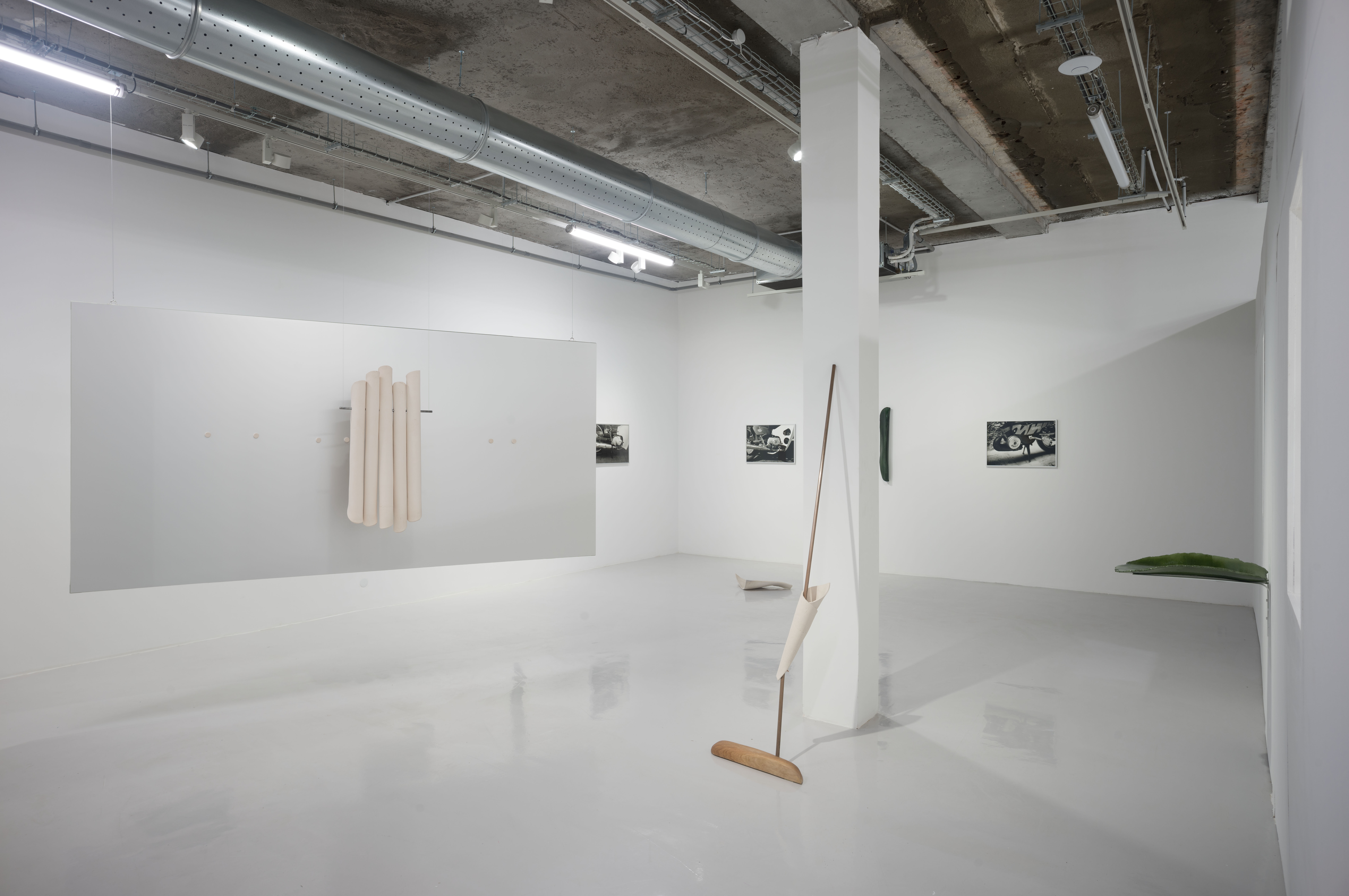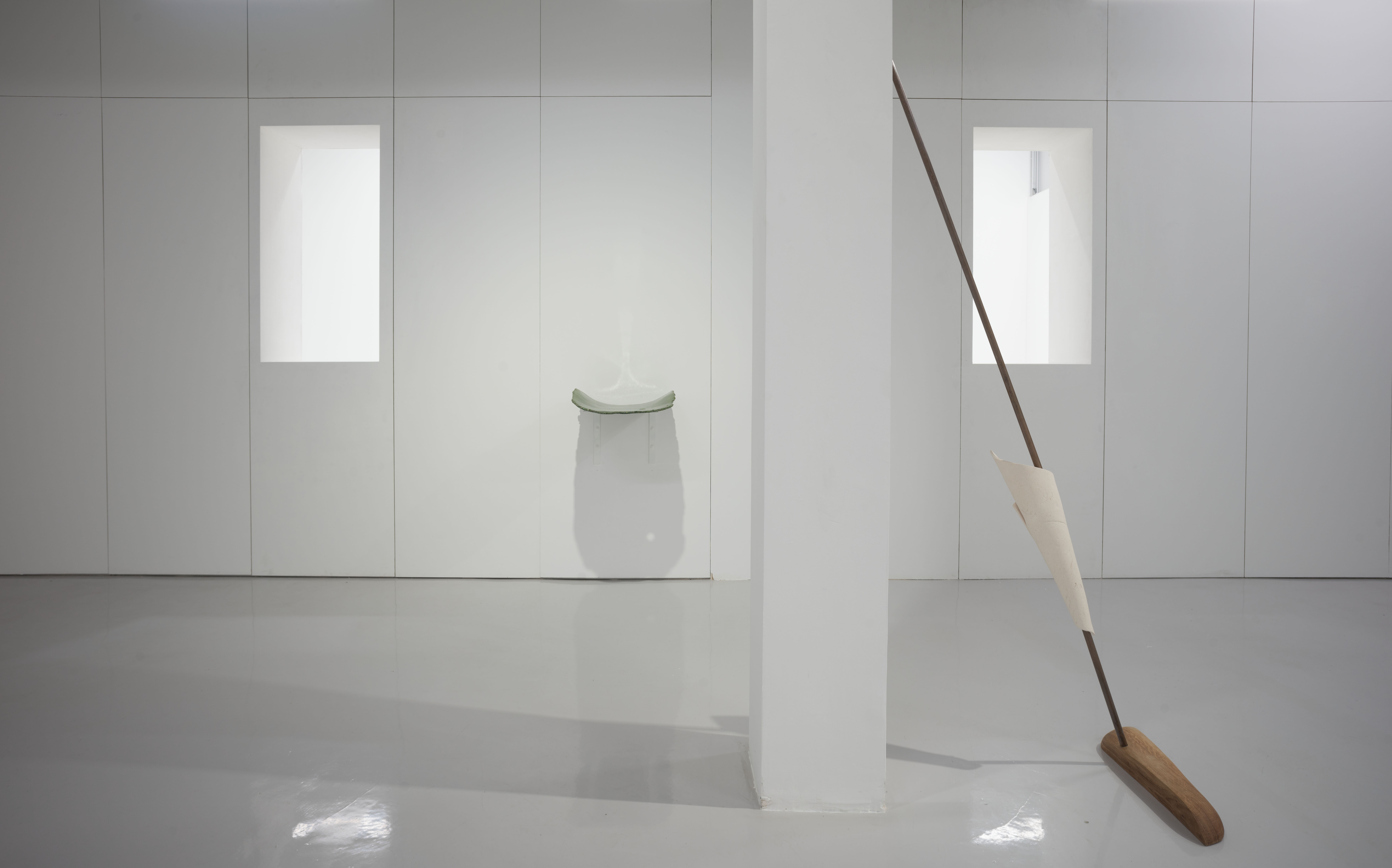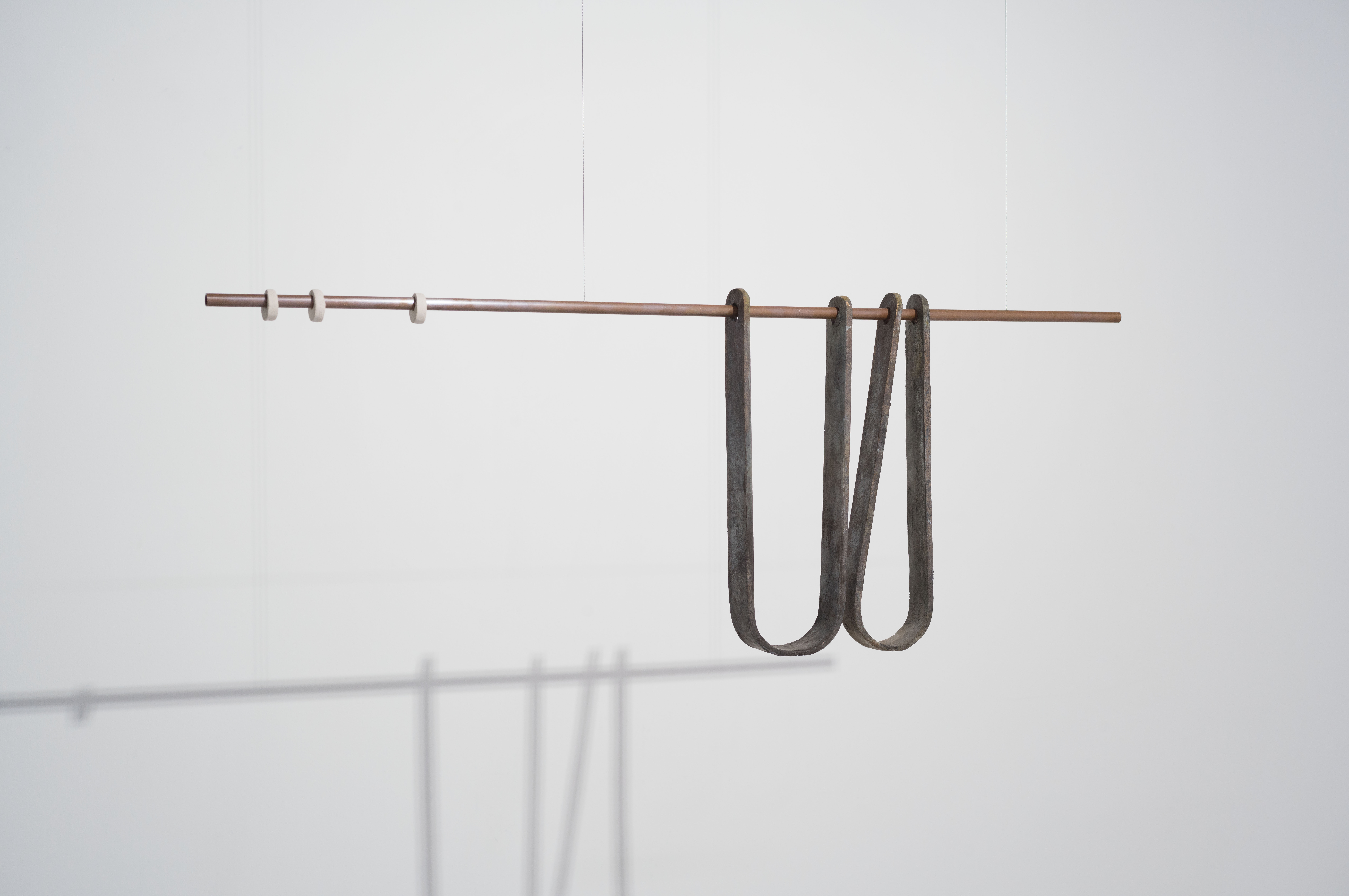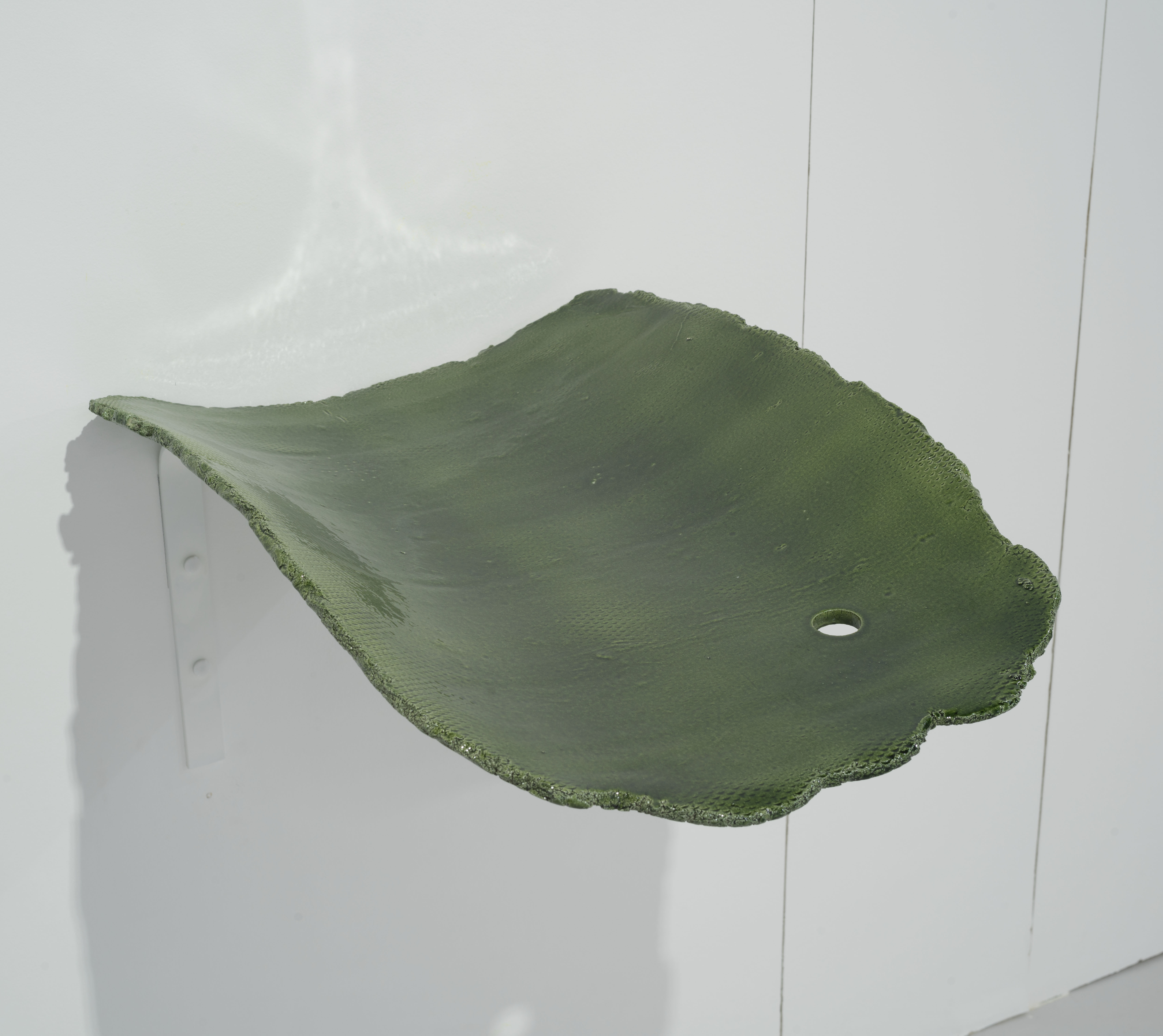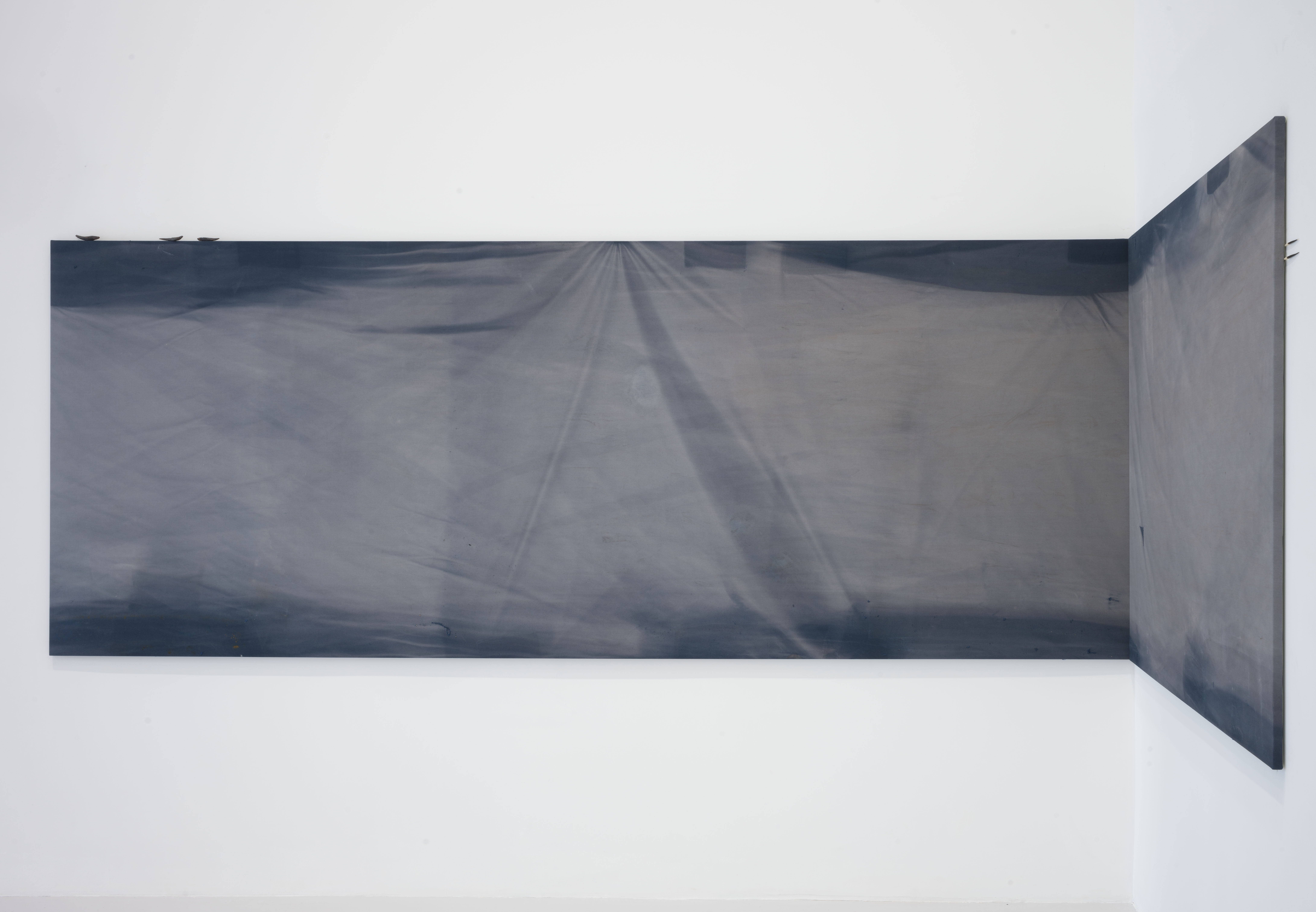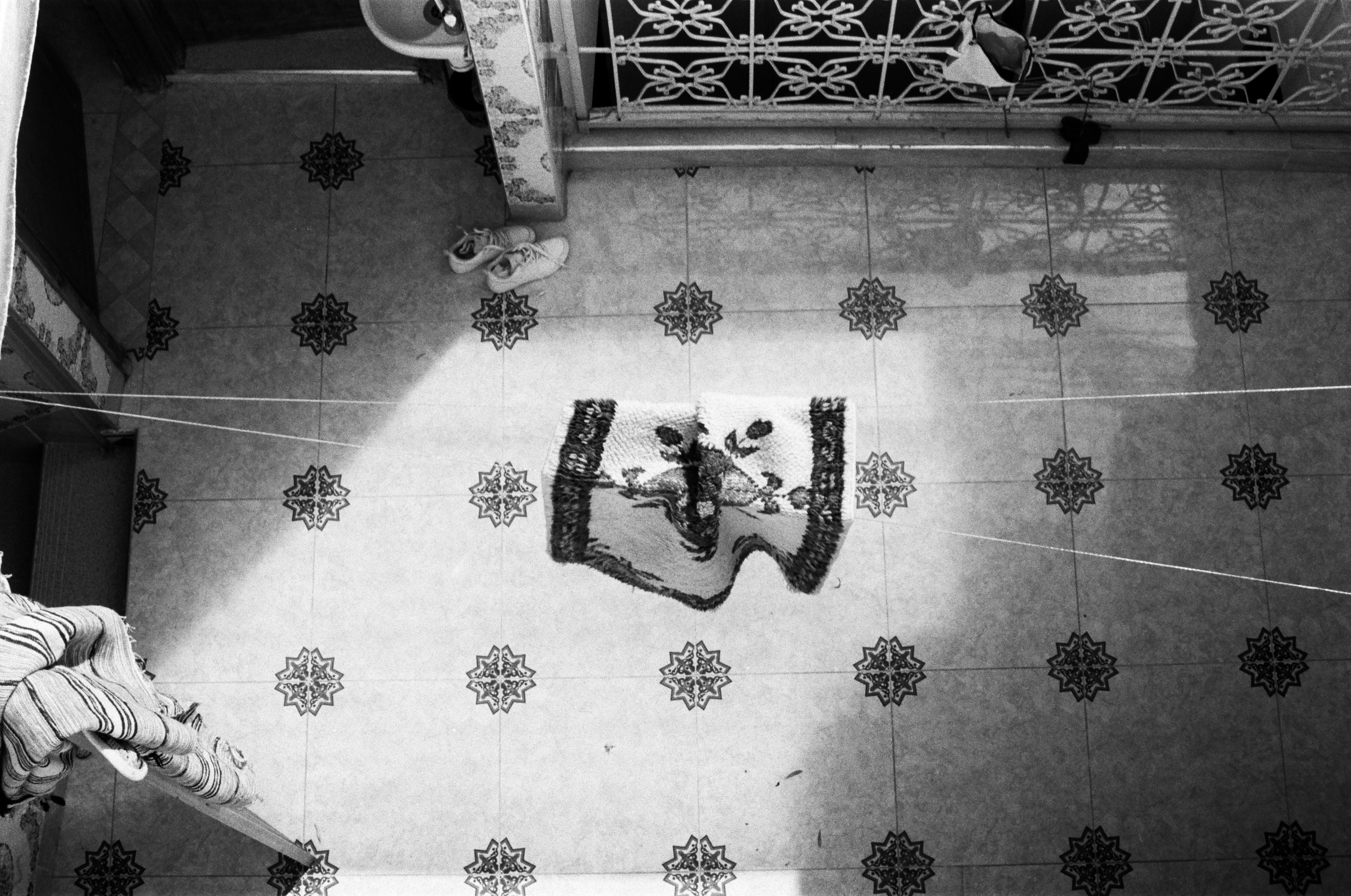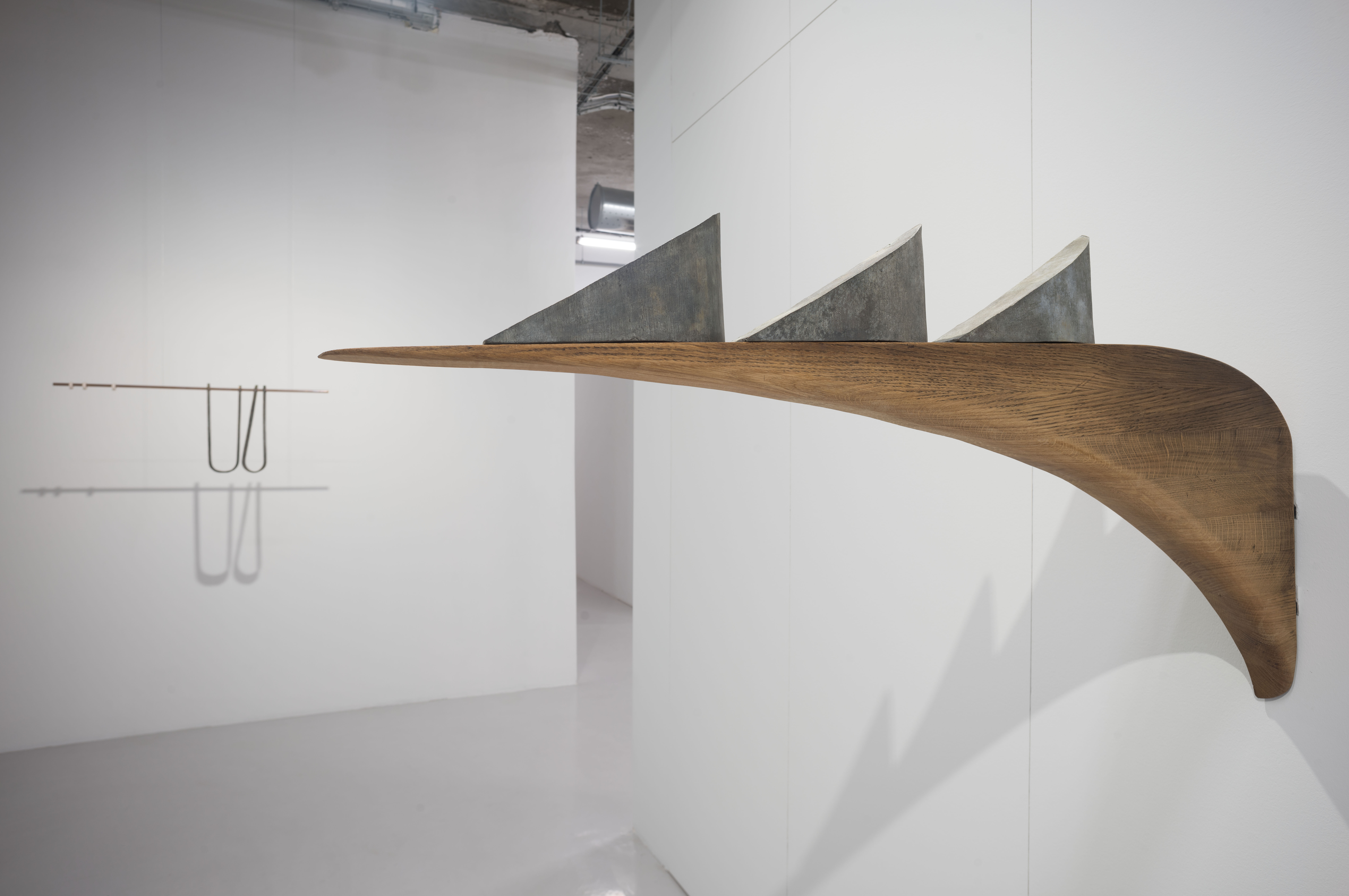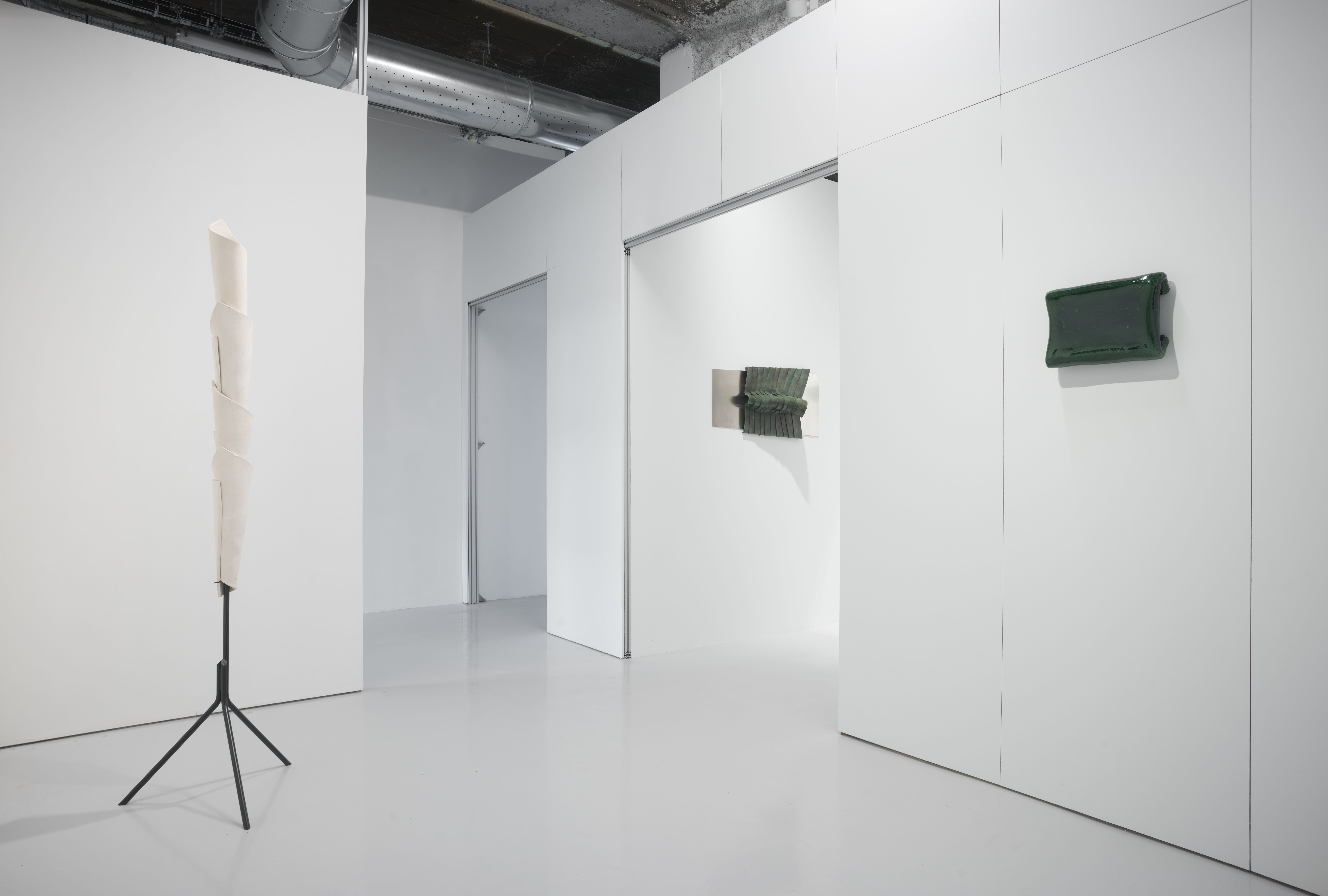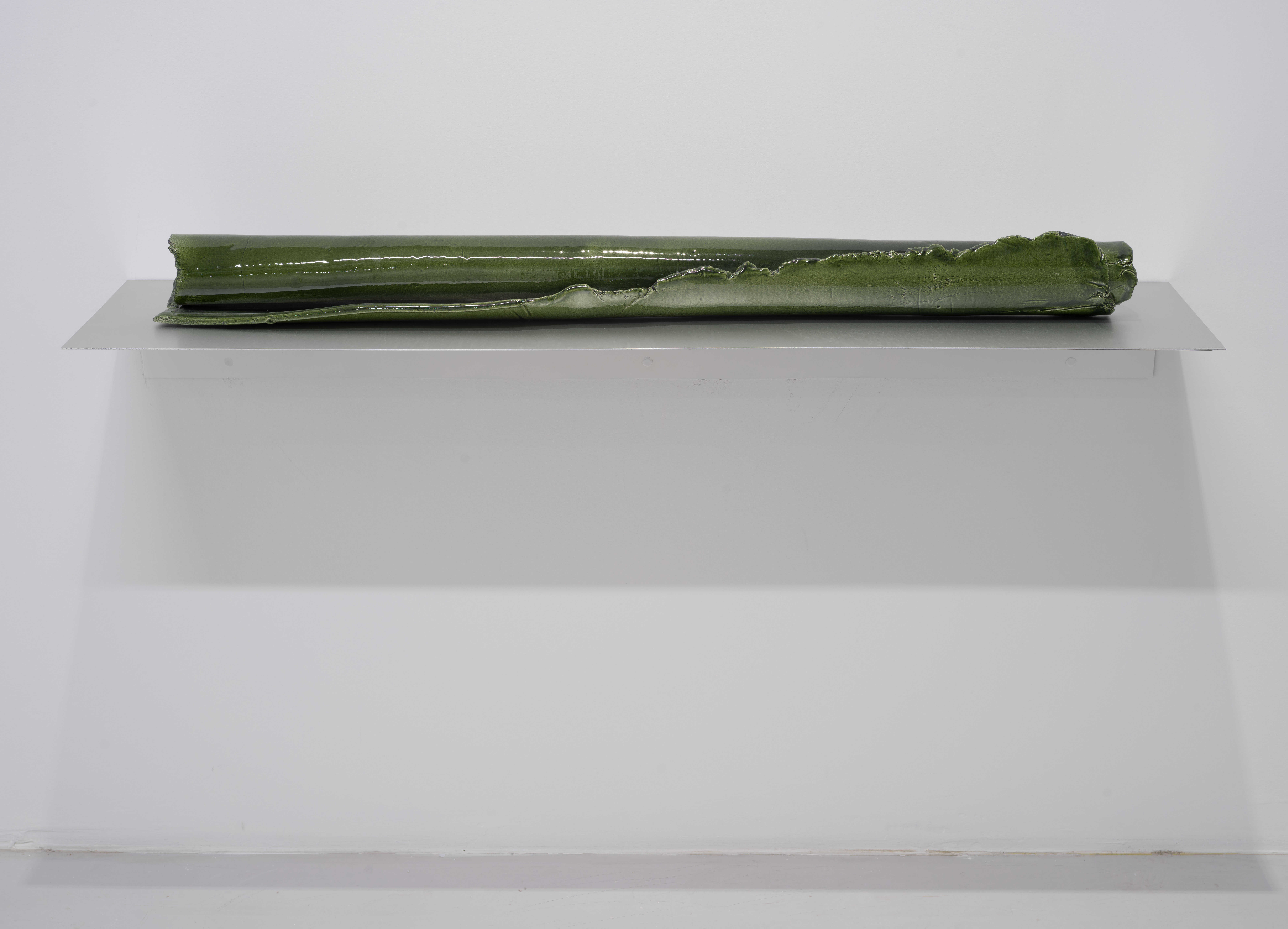Katinka Bock PALOMAR
Collected here by Katinka Bock are wooden, ceramic, and bronze elements derived from the offcuts of previous works. The triangular cut-outs, countermould serrations carved out from earlier sculptures are here cast in bronze and reinstalled on oak piers equally cut out of recent objects. Two jagged sculptures arise from this assemblage, one of sharp dentitions (Les canines) and one supporting a mohawk-like form (Les canines (punk)). Other offcuts, this time of leather, similarly cast in bronze, are formed into strips by the artist - evoking the folds of a cuirass, the coiling of a bandage or the rings of a caterpillar (Insomnie series 1 and 2). These scraps are akin to envelopes and coverings, niches and basins, which for Katinka Bock, contain and protect. From perforated holes in her ceramics, she recovers flat plugs to make rings, pearls or cabochons. Other wedge-shaped cut-outs become brackets attached to fabric panels, distantly evoking stilt stirrups. Legs and feet haunt some of the works; never figurative, they are the necessary supports for balance.
The body is present in Katinka Bock’s work in a diffuse and indexical way, further evoked in her Swing series. Framing motorcycle engines at rest, these photographs reveal a sculptural organism, a mechanical heart whose centrality and aggregation of functions fascinate the artist. On the floor close to these images a ceramic fragment invokes a shard of fairing, another shell detached from its body.
The artist’s use of salvaged materials serves not so much as a part of the virtuous logic of recycling, as it does of a sculptural economy emancipated from its ‘accursed share’(1). Offcuts and waste fall to the ground. Usually, their decay excludes them but here Katinka Bock literally and figuratively raises them up. Their salvaging has nothing to do with a modern heroism but rather with patient and meticulous gleaning, where the distinction between high and low, great and trivial, is suspended. However, the aim is not to equalize everything but rather to weigh up the particular, in order to reach the whole. With its breaths and visual fields, the exhibition’s hanging reflects the desire to accommodate our observational capacities as accurately as possible. Bock references ‘the right distance’ advocated by Claude Lévi-Strauss (2) for the anthropologist in the process of observing: in the field one must negotiate a dual posture, simultaneously wandering and oriented, withdrawn and participatory. ‘Reducing the distance […] without denying it’ (3) and recognizing that an observer forever remains a part of their observation.
The exhibition borrows its title from the fictional character Palomar of Italo Calvino’s novel Mr. Palomar (1983), a vigilant viewer who ‘sees the minute facts of everyday life from a cosmic perspective’ (4). Drawing his name from the Mount Palomar astronomical observatory in California, he is transfixed by the geometric abstraction of Saturn as seen through a telescope. However, after a microscopic observation of a field of grass, he is plunged into a more profound turmoil: how can he grasp the infinite variety, the innumerable, the indistinguishable? How can one grasp the ‘material consistency’ of the world. Katinka Bock’s Teil des Ganzen (‘Part of the Whole’) series reflects this sampling of the infinite: the blue cotton canvases are exposed to the sun outdoors for varying lengths of time. Then stretched on a frame, these fabric ‘windows’ expand into cosmic prints.
Another question, this time one concerned with ethics and tying in with the notion of ‘the right distance’: on the beach in front of a topless bather, Palomar tries out every observation strategy without success. From modesty that turns nudity into a source of embarrassment, to a feigned indifference to a more intrusive gaze that imposes itself and dominates (male gaze?). Confronted with the qualms of a Palomar who desires to observe everything in order to understand and honour it, Bock created Palomars Zeifel (‘Palomar’s Doubt’), a diptych sculpture composed of two glazed ceramic ovals, rolled up onto themselves. Their half-closed eyelids suggest closure, a pause for reflection.
In the suspended sculpture Der Vergleich (‘The Comparison’), two elements balance each other. On the one hand a ceramic cone, a recurrent motif of Katinka Bock’s work: the solidification of improvised paper cones used to wrap flowers or chips, a homemade telescope or makeshift blanket, or perhaps a distant heir to Man Ray’s loosely unfastened and suspended lampshade (Lampshade, 1919). On the other hand, we find a scrap of wood from an earlier sculpture, once serving as a leg. These two forms – one a cover and container, the other a support and sustainer – form a mismatched pair, suspended from a curved aluminum rod. To counterbalance the weight discrepancy between the two objects, the cable from which the mobile is suspended remains off-center. Der Vergleich is an adapted scale in which asymmetry preserves equilibrium. It is the embodiment of Katinka Bock’s pursuit of an observational capacity that is accurate enough to weigh reality in all its nuances and irregularities.
(1) Georges Bataille, La Part maudite, Paris, Les Éditions de Minuit, 1949.
(2) Claude Lévi-Strauss, Anthropologie structurale, Paris, Plon, 1958.
(3) Abderramane Moussaoui, « Observer en anthropologie : immersion et distance », Contraste, vol. 36, no. 1, 2012, p. 31.
(4) Italo Calvino, Monsieur Palomar [1983], translated from Italian by Christophe Mileschi, Paris, Gallimard, coll. « folio », 2019, p. 8.
